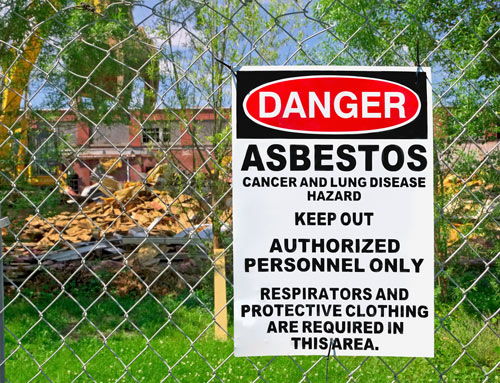EPA’s Asbestos Risk Evaluation Faces Litigation
Legislation & LitigationWritten by Tim Povtak • Edited By Walter Pacheco
Asbestos.com is the nation’s most trusted mesothelioma resource
The Mesothelioma Center at Asbestos.com has provided patients and their loved ones the most updated and reliable information on mesothelioma and asbestos exposure since 2006.
Our team of Patient Advocates includes a medical doctor, a registered nurse, health services administrators, veterans, VA-accredited Claims Agents, an oncology patient navigator and hospice care expert. Their combined expertise means we help any mesothelioma patient or loved one through every step of their cancer journey.
More than 30 contributors, including mesothelioma doctors, survivors, health care professionals and other experts, have peer-reviewed our website and written unique research-driven articles to ensure you get the highest-quality medical and health information.
About The Mesothelioma Center at Asbestos.com
- Assisting mesothelioma patients and their loved ones since 2006.
- Helps more than 50% of mesothelioma patients diagnosed annually in the U.S.
- A+ rating from the Better Business Bureau.
- 5-star reviewed mesothelioma and support organization.
Testimonials
My family has only the highest compliment for the assistance and support that we received from The Mesothelioma Center. This is a staff of compassionate and knowledgeable individuals who respect what your family is experiencing and who go the extra mile to make an unfortunate diagnosis less stressful. Information and assistance were provided by The Mesothelioma Center at no cost to our family.LashawnMesothelioma patient’s daughter
How to Cite Asbestos.com’s Article
APA
Povtak, T. (2023, September 27). EPA’s Asbestos Risk Evaluation Faces Litigation. Asbestos.com. Retrieved April 18, 2024, from https://www.asbestos.com/news/2021/01/27/epa-asbestos-evaluation-litigation/
MLA
Povtak, Tim. "EPA’s Asbestos Risk Evaluation Faces Litigation." Asbestos.com, 27 Sep 2023, https://www.asbestos.com/news/2021/01/27/epa-asbestos-evaluation-litigation/.
Chicago
Povtak, Tim. "EPA’s Asbestos Risk Evaluation Faces Litigation." Asbestos.com. Last modified September 27, 2023. https://www.asbestos.com/news/2021/01/27/epa-asbestos-evaluation-litigation/.

The Asbestos Disease Awareness Organization continued its challenge of the U.S. Environmental Protection Agency, filing a petition for review Jan. 26 in the U.S. Court of Appeals for the Ninth Circuit and an intent to sue notice under the Toxic Substances Control Act.
ADAO, the leading nonprofit aimed at preventing asbestos exposure and raising awareness about mesothelioma, was joined by five public health groups and six doctors and scientists in its latest filings.
The petition for review is aimed at the EPA’s Final Risk Evaluation for Asbestos from earlier this month that was roundly criticized for underestimating the dangers of this toxic mineral, despite a presentation of unreasonable risk to human health.
The 60-day intent to sue notice is aimed at pushing the EPA to perform its nondiscretionary duty of addressing the use and disposal of legacy asbestos in that risk evaluation.
Both filings named Jane Nishida, acting administrator of the EPA.
“Shaping public policy can be glacially slow. It’s imperative for us to exercise our legal options as provided in the TSCA [Toxic Substances Control Act],” Linda Reinstein, president and founder of ADAO, told The Mesothelioma Center at Asbestos.com. “The dangerously incomplete final risk evaluation understates the enormous toll of disease and death for which asbestos is directly responsible.”
ADAO Changing Its Role
ADAO has been involved in advocacy and education efforts regarding asbestos exposure for almost two decades. Its focus in recent years also has turned to legislative and legal initiatives, mostly directed at the EPA.
The ultimate goal has been a complete ban of asbestos, along with tighter requirements on reporting exposure and legacy asbestos. Numerous legislative attempts throughout the years have failed in Congress.
Most recently, the Alan Reinstein Ban Asbestos Now Act of 2020 – H.R. 1603 – failed to advance through the U.S. House of Representatives in October, despite broad support.
The EPA’s Risk Evaluation for Asbestos was sparked by the 2016 amendment to the Toxic Substances Control Act, which identified the mineral as one of the first 10 chemicals to be examined.
EPA Asbestos Action Slowed to a Crawl
Although the EPA’s Final Risk Evaluation for Asbestos was expected to be finished by 2020, the agency released only Part 1 earlier this month, addressing 16 conditions of asbestos use that presented either occupational exposures or consumer uses.
Asbestos exposure can cause a number of serious health issues, including mesothelioma cancer.
Part 1 failed to address legacy asbestos, which remains in residential and commercial buildings after decades of unbridled use throughout the construction industry.
According to the EPA, a Part 2 preliminary evaluation will become public in mid-2021 and will address the issue of legacy asbestos and the associated disposals of the product.
The EPA Office of Pollution Prevention and Toxics will hold a public webinar Feb. 3 to explain its risk management process under the TSCA and its Part 1 findings. The public will have an opportunity to present suggestions for managing the unreasonable risks.
“The EPA found unreasonable risk to consumers and bystanders from all consumer uses of chrysotile asbestos,” the report states.
Asbestos, which already is heavily regulated, has not been mined in the U.S. since 2002. A record low of 100 metric tons of raw asbestos was imported in 2019, all of which was consumed by the chloralkali industry, which uses it for semipermeable diaphragms to make chlorine.
The asbestos products list today includes imports of sheet gaskets, aftermarket automotive brakes, brake blocks, other gaskets and friction products. The exact import volume of those asbestos products is not fully known, the EPA admits.
Criticism of EPA Evaluation Is Widespread
The criticism of the evaluation has been extensive. In December 2020, a California District Court judge ruled that the EPA has unlawfully failed to use its TSCA authority to make a sound risk evaluation. The judge was ruling on a lawsuit filed by ADAO and other groups.
California is one of several states whose attorneys general sued the EPA in 2019 over the lack of asbestos reporting. In August, the Science Advisory Committee on Chemicals, a peer-review mechanism for the EPA, found several problems in an earlier risk evaluation for asbestos, believing its scope was too limited.
Some of the criticisms being levied will be addressed in the upcoming Part 2 of the Final Risk Evaluation for Asbestos, but others, such as asbestos-contaminated talc, will not be.
“We need people to believe in what we’re doing,” Reinstein said. “Our work to prevent asbestos exposure enters a new phase.”







